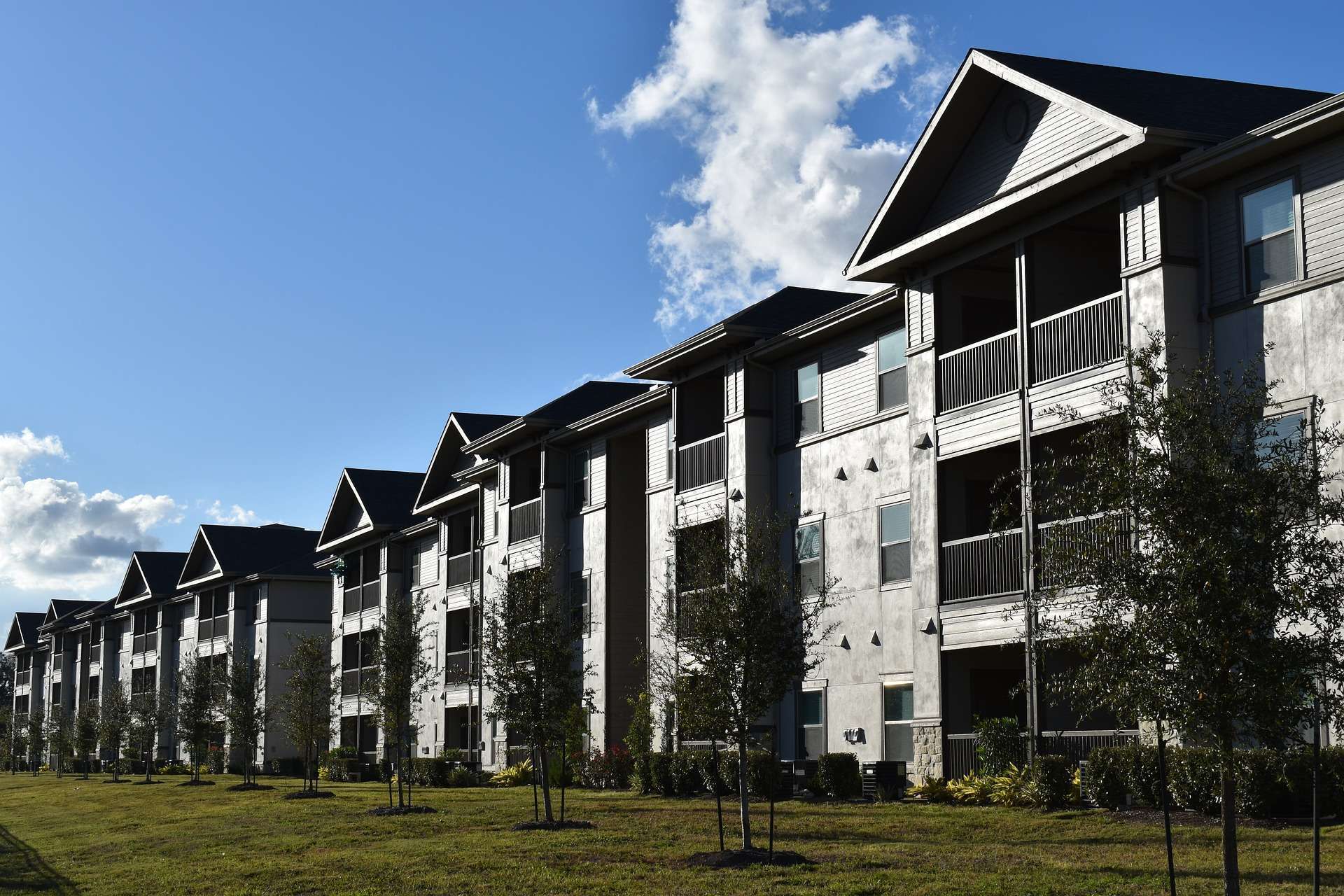
eXp Commercial is one of the fastest-growing national commercial real estate brokerage firms. The Chicago Multifamily Brokerage Division focuses on listing and selling multifamily properties throughout the Chicago Area and Suburbs.
Tuesday, January 31, 2023
2023 Executive Preview | National Apartment Association

The potential for an economic downturn has not dampened rental housing industry executives’ spirit or outlook.
The rental housing industry has gracefully adapted and evolved during the current economic climate and global atmosphere. Nearly three years ago, the world halted, causing many, not just multifamily businesses and professionals, to re-imagine their lives through a different lens. This wave of change has affected the rental housing industry tremendously, ranging from supply and demand implications to technology implementation to workforce shortages.
Some of the impacts on the industry have caused owners, management companies, developers, and others to quickly find solutions to continue providing quality customer service and care to residents.
With these challenges comes solutions—some have gone away while others have stayed—like self-guided touring, online rent payments, other new technologies, purpose-built home offices for the growing number of work-from-home residents, and further portfolio diversification.
Here’s what rental housing industry professionals look forward to this year and what they wish they had known last year.
There have been many challenges during the past three years, but depending on who’s asked, each hindrance can differ—as can each solution. Several overarching issues facing the rental housing industry are well-documented, such as staffing shortages, interest rate increases, and inflation. Other potential setbacks in 2023 include rising insurance rates, an increase in taxes, and legislation that can influence operations, e.g., rent control.
“We are still seeing challenges in the workforce,” says Lance Goss, Senior Vice President HHHunt Apartment Living. “Low unemployment coupled with the new multifamily communities coming online has created a tight job pool. We are also seeing regular increases in goods and services, driving our expenses up, and we are seeing rent rates cool from previous years. All of this will create challenges for the multifamily industry.”
Inflation and Costs
The U.S. Bureau of Labor Statistics reported the Consumer Price Index increased 0.4% in October 2022 from the previous month, putting inflation at 7.7% year-over-year.
Costs are not only up for consumers; businesses and the rental housing industry have also witnessed cost increases. One of the most straightforward strategies for easing cost increases is to do what consumers do: Shop around.
“We make multiple bids for services to try and lower costs,” says Bonnie Smetzer, CPM, HCCP, Executive Vice President with Asset Living. “We still prefer to use our great supplier relationships but have found it helpful to take competitive bids and use that to negotiate our current services where we are satisfied.”
Curt Knabe, CFO of Realty Center Management, Inc., says, “We continue to shop for the best deals and rely on our supplier partners to assist us. At the end of the day, though, we are just trying to make super-smart purchasing decisions.”
Some companies have even had to alter their operations to keep pace.
“We started a major supply chain initiative that we continue to grow where we are pooling our project component buys like appliances, windows, HVAC, cabinets, etc., and sourcing them more directly using an online application for procurement vs. the traditional supplier distributor model,” says Alliance Residential President/COO Jay Hiemenz. “Not only have we demonstrated savings, but we’ve also increased our probability of procuring materials on a timely basis by securing these preferred relationships and tying the tech into our project scheduling software.”
Peter DiCorpo, Co-Founder and COO of Brook Farm Group, says, “We are underwriting our developments to factor in the current economic environment. This means accounting for higher annual operating expense increases and determining which deals make sense today. We are also letting some deals fall to the wayside to focus on those with a higher potential for success.”
Ronda Puryear, President of Management Services Corporation and 2023 National Apartment Association Chair of the Board, has witnessed rising costs in services, equipment, and payroll, among other items on the operations side. “In the development area, everyone has experienced the soaring price of multifamily real estate, pricing many companies out of the market,” she says.
The land cost has been a major factor in rental housing, with some companies facing prices that have doubled.
“In Florida, where we have a robust development pipeline, construction costs have increased 50% over the last three years, and land prices for new apartments have more than doubled in the same time frame,” says Smetzer. “I wish I had known apartment land prices would double. I would have purchased apartment land!”
Deciding where to upgrade communities is also top of mind with increased costs. At Luma Residential, President Ian Mattingly says they are spending money wisely and making those difficult decisions. “As a percentage, we have seen the biggest cost increases in appliances and hardware, with lumber and other building materials not far behind. As a result, we are doing fewer appliance upgrades and focusing more on countertops and other value adds to our renovations. Overall, we’re trying to balance the rent premiums we can get with the new cost inputs related to unit upgrades.”
Workforce
Many in the industry have been affected by some shortage in labor, whether at their firm or with business partners. Mattingly says that while LUMA Residential is feeling the impact of operating with 7% to 10% fewer staff members compared to the pre-pandemic levels (on par with industry experience), their maintenance employees have half the average tenure than before the pandemic.
“Finding maintenance technicians in our industry is so difficult and important to what we do every day,” says Don Brunner, President and CEO of BRG Realty Group and Immediate Past Chair of NAA’s Board. “Satisfaction of our residents is tied to the service provided, so finding those technicians is key.”
The search for quality employees has led to changes in hiring, including offering remote or hybrid work and increasing starting pay.
“There was a point in 2022 where we had more job openings than we have ever had as a company,” says Knabe. “We are trying to compete with everyone else in finding good people. Pay rates have increased, employee referral bonuses, starting bonuses, anything we can do to compete, we are trying.”
Puryear says this isn’t a new trend but picked up during the pandemic. “Employee decisions to stay at home, relocate closer to family, try a new field or retire early greatly impacted our labor pool in various positions,” she says. “The most impacted area has been that of skilled and entry-level maintenance employees, a trend that started even before the pandemic.” Solutions from Puryear include increased salaries, annual bonuses, and different recruitment tactics.
“We are handling [staffing issues] by regularly reviewing and adding to our benefits for team members,” says Jamin Harkness, President of The Life Properties. “Our starting pay has increased. We provide monthly bonuses for goal achievements, keeping team members engaged and striving for their goal regularly with a monthly bonus payout rather than a quarterly bonus.”
John Foresi, CEO of Venterra Realty, has dealt with employment candidates “ghosting” the company—not communicating or showing up for an interview—yet they have remained fully staffed. “A key element of that success has been adjusting our pay levels, getting our research and analytics teams involved with HR to ensure that we are competitive in the marketplace… Recognizing the cost-of-living challenges everyone has faced this year, we implemented a one-time, additional bonus across the organization this summer, which had a measurable, positive impact on employee retention and job satisfaction.”
Construction
Multifamily starts declined 4% in October, according to Dodge Data & Analytics. Despite the drop, multifamily starts are ahead of single-family begins by 26% to 10%, respectively, during the first ten months of 2022 compared to the same period in 2021.
Meanwhile, the National Association of Home Builders reports a decline in multifamily developer confidence during the third quarter as both its
indices—the Multifamily Production Index, which measures the construction of affordable housing units, market-rate apartments, and for-sale condominiums, and the Multifamily Occupancy Index—declined substantially to levels not seen since the Great Recession, excluding the initial onset of the pandemic.
One way DiCorpo and Brook Farm Group are combatting construction cost increases or materials issues is with advanced purchasing. “One of the benefits to the development pipeline slowing is that it will help bring down some of those costs,” he says. “We’re trying to mitigate this issue by meeting with general contractors well in advance and getting them involved early in the process. We’re also buying products earlier in the development cycle and storing them nearby to lock in the costs and manage the variability.”
Brunner says similar buildings only a couple of blocks away now cost 20% to 30% more than they did just one year ago. “The supply of product is available, but the cost of the manpower to put those new communities together has increased from site development work to utilities to finding the cost of the products going up—everything is more expensive.”
Smetzer is “seeing a pullback on rents in some markets and increasing interest rates. Lenders are now requiring more equity than in previous years. We are finding it hard to make deals work and worry these factors will impact our ability to develop new apartments in 2023 and beyond.”
Rent Growth
Rent growth continued to subside during the latter half of 2022. The December 2022 Apartment List National Rent Report shows the national index declined 1% during November, which is the third straight month-to-month decline. The 1% dip was the most significant monthly decrease in the national index since the firm began the index, dating to 2017.
Despite the record monthly decline, rents are still up 4.6% year-over-year. However, that’s a far cry from the record-setting mark of a 17.6% increase in 2021. A decline in the year's final quarter is not unusual as it follows seasonality, even dating before the pandemic.
Many believe while rents will remain somewhat elevated, rent growth will be subdued slightly in 2023.
“After robust rent increases in 2021 and most of 2022, we started seeing a pullback in rent increases and are starting to see concessions in markets again,” says Smetzer. She adds that Florida markets have witnessed exponential rent growth during the pandemic, and “we are forecasting 6% increases in Florida for 2023 and more conservative increases in other state markets.”
According to Forest, “There is already evidence in broader wage data that income growth is starting to return to a more trend-like pace. While we don’t expect things to go backward, by late 2022/early 2023, we would expect to see rent growth much closer to historical norms, consistent with moderating renter incomes.”
Harkness also says rent growth will return to lower single-digits, around 5% to 6%. “The past two years have been an anomaly, and we cannot count on that history to repeat.”
And with a potential recession on the horizon, rent growth will likely be subdued by the historical development during the past couple of years. “We believe, as most economists do, that a recession will likely cause rents to either flatten or increase only moderately,” says Hiemenz. “We’re not projecting effective net rents to fall, but that depends on the overall economic picture, job losses, etc.”
While vacancy is more than a percentage point and a half higher now than last fall's low, it’s still lower than pre-pandemic levels. According to Apartment List, vacancy hit 5.7% compared to 4.1% in October 2021.
“Our industry has been on a great ride the past few years in terms of occupancy and rent increases, but I think that will start changing,” says Knabe. “I have already seen the decrease start in certain markets. People are starting to cut costs, and job layoffs have also started.” He says this will affect occupancy, which he predicted would slip from the high 90s to the low 90s or lower “if the economic turmoil is worse than forecasted.”
Technology
Technologies ebb and flow—think cassette tapes to CDs to streaming services or Myspace to Facebook—with the times, which is precisely what the entire industry has done during the pandemic but not entirely as a result of the pandemic.
Some tech and other items like self-guided tours were around before COVID-19. Still, the pandemic acted as a catalyst for many to implement this potentially new style of leasing opportunity for prospective residents. Smetzer says they implemented self-guided tours during the pandemic, but they have started to fade, yet virtual tours continue to be popular.
Knabe also says they adopted self-guided tours, but they were eliminated. “I do feel that the human touch has taken over in the leasing world.… There seems to be a lot of technology driving toward that space.… One of the technologies that have caught my eye is in the area of fraud prevention. Our site teams continue to see fake IDs, fake paystubs, etc., but there has been a lot of new technology to assist the sites in preventing that type of fraud.”
Amy Weissberger, Senior Vice President of Corporate Strategy with Morgan Properties, has also found the technology helpful when detecting fraud. “Identity verification and income verification products also moved to the forefront during the pandemic, as fraudulent employment documents seemed to increase,” she says. “The technology to check identification documents and income is improving and becoming an important added tool as part of the application screening process.”
Companies are also becoming more efficient because of these new technologies or new developments in technology. Weissberger says customer relationship management (CRM) software has helped onsite staff and user experience, “improving the journey for our applicants and residents.”
The Life Properties also rolled out self-guided tours, but as the pandemic eased, their use declined. CRM use has given a “level of transparency that helps us make decisions quickly,” Harkness says. Before CRM software, they would have to follow up and track advertising performance manually.
Venterra partnered with an intelligent home automation provider to “implement a high quality, personal, contact-free apartment tour experience,” Foresi says. “Post-COVID, this remains a benefit to our customers, as they can easily arrive at a community, scan a QR code, select the apartment type they want to tour, and take the tour independent of the office staff should they choose.”
Hiemenz also says COVID technology will stay to some degree, allowing residents to take advantage of work-from-home opportunities—a significant driver in some of the changes witnessed in multifamily. “We also believe that the remote work/work from home, although not an absolute necessity as it was during COVID, still has a permanent place for the U.S. workforce, and thus our properties have to be fully implemented with appropriate connectivity allowing work at home productivity.”
Legislation and Regulation
“Providing housing is more important now than ever before, but I am also concerned about increased regulation, which adds costs to operations at a time when costs have been rapidly increasing,” says Smetzer, who is also worried if the U.S. Department of Housing and Urban Development decides to remove the ability to perform criminal screenings. Rental housing providers and management firms do their best to protect residents, so removing one of those protections could impact operations.
“Increased regulation continues to slow the development pipeline and adds to increased cost of development and operating expenses,” says Smetzer, who forecasts this will continue in 2023. “We are fighting rent control in some markets that will negatively impact operations and the ability to finance new construction.”
Harkness sees promise in the Broadband Equity, Access, and Deployment (BEAD) Program, a more than $42 billion internet for all program, “which will enable the provision of high-speed internet to low-income households on a state-by-state basis via targeted investments in critical infrastructure and key communities,” says Harkness. “While the mechanics of each state’s particular administration are still somewhat opaque, we are extremely optimistic about the benefits of this program for our residents.”
He adds: “The government has proven to support mission-driven affordable housing, which is consistent with our asset acquisition strategy. We hope to continue to see bipartisan support of more initiatives that incentivize the creation and preservation of affordable housing.”
Mattingly sees much of the same going forward into 2023 surrounding government regulation and legislation. This includes wrestling with rent control, the Housing Choice Voucher Program (Section 8), and free legal counsel for renters. “All of this often-well-
intended policies have various unintended consequences that ultimately add to the already enormous government-imposed costs associated with providing rental housing.”
Looking Ahead
Some companies have weathered the pandemic better than others, allowing for new business opportunities, such as entering a new market or sector or establishing a new business model.
Smetzer says they started a build-to-rent division in 2021 and have seen robust growth, as has Asset Living’s new construction/lease-up portfolio.
One positive Weissberger mentions is the growth of environmental, social, and governance (ESG) programs. “Several new product offerings and services came to market over the last two years, and owners, employees, and residents are embracing them. By focusing on ESG, company cultures will continue to improve, and our communities will become an even better place for our residents to call home.”
Despite some potential headwinds in 2023, there is much to be excited about in the rental housing industry; this includes business expansion.
Goss says HHHunt Apartment Living purchased five new communities, four in new markets, in October/November. “This has been an exciting process for us as acquisitions are somewhat new to our organization. It has been the fun challenge onboarding/training new people, creating new budgets, at the same time as we go through our normal budget process.” History can repeat itself, but it is also one of the best ways to learn for the future. Harkness said his experiences during the Great Recession nearly 15 years ago—cutting rents and expenses—taught him how
to run a company with a lighter staff.
Since then, the economy has mainly improved until the pandemic and a potential recession this year, with technological advancements and other new factors. He says their tech stack continues to grow yearly with the tendency to cut back when there are higher interest rates. Still, he asks, “Moving forward, could we pivot—as we mastered during COVID—to leverage technology and increase the impact of each team member?”
Weissberger did not realize how easy it would be to work from home and connect with co-workers. In turn, residents worked more from home and will continue to do so. She says they needed to find ways to offer certain products and services to keep residents engaged and wanting to live in the communities.
“As part of the innovation team in our organization, we specifically look for new products that set us apart from the property next door and enhance residents’ everyday living experiences.”
Monday, January 30, 2023
Deconstruct Looks at CRE Investment Forecast for 2023

It’s the end of the year as we know it, and investors feel uncertain.
Rate hikes have slowed deals in the second half of 2022, and Federal Reserve Chairman Jerome Powell said there’s more pain to come.
But how long can investors’ ample dry powder sit on the sidelines?
The deal dam may break halfway through 2023, Moody’s senior economist Thomas LaSalvia said on the latest episode of TRD’s podcast “Deconstruct.”
“The market is going to have to adjust starting in the middle of next year,” LaSalvia said. “I have a feeling that we will start to see deal volume pick up a little bit more as prices maybe adjust a little bit and also as investors find creative ways to get deals done.”
But each sector holds its own nuance as rates keep rising, inflation remains high and recession looms. Multifamily’s record-breaking rent growth is likely to lose steam. Retail sales may finally feel the impact of heightened prices, and the fate of office could finally come into focus.
Tune into the full episode for a sector-by-sector breakdown of what research firms expect for 2023. The podcast will be back after a holiday break on January 9 with a new episode on Apple Podcasts, Spotify, Audible or wherever you get your podcasts.
Source: Deconstruct Looks at CRE Investment Forecast for 2023
https://www.creconsult.net/market-trends/deconstruct-looks-at-cre-investment-forecast-for-2023/Sunday, January 29, 2023
Chicago Becomes the Hottest Rental Market Amid a Nationwide Cooldown

While the autumn months brought a cooldown in rental prices across the U.S., some metro areas, such as Chicago, Boston, and New York, are bucking the trend with double-digit growth, according to a report out Tuesday.
In November, the median asking rent across the 50 largest metros tracked by Realtor.com increased 3.4% yearly to $1,712. According to the report, the annual growth rate was the slowest in 19 months.
“Many Americans’ budgets are being pulled in multiple directions as the holidays approach, bringing a more typical seasonal cooldown to the rental market that we hadn’t seen in the last few years,” Danielle Hale, chief economist at Realtor.com, said in a statement.
In the Sun Belt, where both sales and rental markets experienced a pandemic boom, rental prices saw the most significant cooldown. The median asking rent in Riverside, California, fell 5.5% in November to $2,071 per month. In Las Vegas, the monthly rent dropped 4.9% to a median $1,481, according to the report.
In major economic hubs such as Chicago, Boston, and New York, where there are more employment opportunities and higher concentrations of college students, monthly rents climbed by double digits compared to a year ago. Chicago experienced the largest annual growth, with the median rent increasing 20.8% to $1,949 monthly.
Boston’s median rent rose 11.8% year over year in November to $2,865 per month, surpassing New York’s monthly rent of $2,727, which was 9.4% higher than the same period last year, according to the report.
Also, the rental market is expected to remain competitive in 2023 as still-high inflation, and interest rates will deter potential buyers from purchasing homes.
“Despite this recent relief, renters will continue to be challenged by affordability in 2023, with rents forecasted to hit record highs,” Ms. Hale said.
Source: Chicago Becomes the Hottest Rental Market Amid a Nationwide Cooldown
https://www.creconsult.net/market-trends/chicago-becomes-the-hottest-rental-market-amid-a-nationwide-cooldown/Saturday, January 28, 2023
What’s the Outlook for Affordable Multi-Family Housing in 2023?

In addition, demand for affordable multi-family housing increased as more Generation Z renters (age 18 to 23) left their family homes for apartments.
This is good news for investors searching for affordablemulti-family housing for sale, as their cash flow will increase with the passive income generated by tenants’ rent.
However, renters and investors are still coping with the effects of runaway inflation, living and renting in an increasingly expensive world. In addition, Fannie Mae is predicting aslowdown in multi-family construction. How will this affect next year’s multi-housing outlook?
The Federal Reserve’s Plans for 2023 Interest Rates
It’s impossible to predict an accurate outlook for multi-family housing and renters without reviewing the predictions issued by the Federal Reserve, or “the Fed” as it’s commonly known.
One of the Fed’s primary responsibilities is tomonitor the nation’s financial systemsand to support a healthy economy.
This responsibility has been evident from 2020 to the current date.
- During 2020, the Fed Reserve responded to fears of a lasting recession by reducing the federal funds rate to around 0.25%.
- Fast-forward to late 2021, the national economy was hit with runaway inflation.
- The Fed responded with four interest rate hikes during 2022 that increased the federal funds rate from 3.75% to 4.00%.
The Fed hopes to discourage consumers and businesses from buying with credit by creating more expensive credit. This helps “cool” the economy and put the brakes on inflation.
This strategy has been described as "bad-tasting, but effective" economic medicine.
How lousy will rates taste next year?
Rate Predictions for 2023
During 2023, the taste of Federal rate hikes probably won’t improve. According to the President of the Federal Reserve Bank of Chicago, rates are expected to continue rising from 4.5% to 4.75%.
The question for investors financing their purchases of multi-family properties is:How many will postpone their investments in 2023?
It’s possible that, even when paying more for commercial property financing, investors who don’t postpone their expansion into multi-family property sales may still profit. This is because rental rates and demand for additional units continue to grow.
How Rising Rates May Affect Multi-Family Investors
While most developers dislike postponing a new project, higher rates create expensive credit. Some analysts predict that some 2023 apartment builds will be delayed, but not all.
For example, a developer’s financial backers may opt to raise the rental rates of a completed building, as this will help cover the additional cost of credit used to buy construction materials.
This may translate into higher rent rates for newly-built multi-family real estate.
This is only half the picture. It’s not realistic to consider how rising interest rates will affect investors without considering the effect on their tenants.
Will Renters’ Preferences Change?
It’s well worth it for investors to research potential renters in their preferred area.
- In some cities, more renters are opting for roommates. Developers may want to add more two- and three-bedroom units to new projects.
- Not all renters plan to share, especially those who work remotely. They’re often willing to pay more for one-bedroom and studio apartments.
One example: When an NYC developer announced plans for a multi-family building composed entirely of 302 sq. ft. studio apartments,60,000 potential renters appliedfor one of the 55 units before they were completed.
Here are details of new affordable multi-family housing projects planned for construction during 2023.
Multi-Family Projects Expected for 2023
As the number of renters continues to grow, so does the demand for rental units.
During 2022, multi-family construction skyrocketed, hitting an all-time high of 841,000 units under construction. In addition, building permits rose 25.5% year-over-year.
With more would-be homeowners priced out of the market and younger workers leaving the family home, some industry analysts have identified a logjam of renters.
Rates that sidelined would-be homebuyers are also affecting developers. Some have already decided to postpone construction starts. This is evidenced by the number of multifamily units officially authorized by city officials but have not yet started.
Industry experts fear that this trend will only become worse in 2023. Will the number of renters in 2023 cause the predicted logjam? Will rents rise, and by how much? Apartment managers have their data.
Tenancy and Rent Rates: Data and Predictions
According to theresearch team at Apartment List, the national rental price index fell by 0.7% during October 2022. This isn’t a surprise, as fall and winter are slow rental months.
However, rent prices continued to pull ahead of pre-pandemic numbers. As of November 2022, rents for the year have increased by around 5.8% annually.
Researchers also found that the vacancy index grew to 5.5%.
If you’re wondering why vacancies increased, this is due to a slower rate of what’s referred to as“household formation.” More nervous, young, would-be renters prefer to stay at the family home or with roommates.
That said, today’s vacancy index remains below the pre-pandemic norm. This translates into a year of opportunities for careful investors.
One Thing's for Sure: Additional Housing Is Needed
While industry analysts don’t all agree about the current outlook for multi-family housing, the need for additional units during 2023 and beyond has been identified.
Unit shortages in many areas are due to increased mortgage costs, more first-time homebuyers being priced out of the market, and inflation.
Rising interest rates may result in some, but not all, new multi-family builds being postponed.
As with any investment plan, start with research of today’s markets and the assistance of a broker if you’re starting.
Source: What’s the Outlook for Affordable Multi-Family Housing in 2023?
https://www.creconsult.net/market-trends/whats-the-outlook-for-affordable-multi-family-housing-in-2023/Should I Sell or Should I Hold? When is the best time for asset repositioning?

When it comes to selling their investment properties, clients typically ask me,’ Why should I sell?’ Great question. Why should you sell? The obvious answer is that you purchased the investment property as an investment, and it may not be doing as well as other investment opportunities, and after a while, you don’t realize the appreciation and thus maximization of profit from the property until you sell and acquire another investment property. So the question is really, ‘When should I sell? Clients really lose the perspective of the driving reason why they invested in an investment property in the first place. An investment property is just that; an investment. Treated as such, every investment must have a horizon and an exit strategy. If a property was purchased as an investment, then it makes full sense to profit as much as possible from the investment.
The real estate market, like any other market, will go through peaks and valleys. Trying to predict the exact moment of peak or the exact moment the market reaches the bottom is practically impossible. The real estate cycle has four phases; recovery, expansion, hyper supply, and recession. The complete real estate market cycle seems to have an average duration of about 18 years as there is good historical data to support that. So, where are we in that cycle now? How much more upside will we see before we reach the peak? The question really is, ‘What is your appetite for risk?’
Below is a chart of the real estate cycles dating back from the 1800s. The last real estate market crash started at 2006. We are almost 16 years into that cycle. Interest rates are still at all-time lows. Money is cheap, and the threat of inflation is very high. How long can government print money without paying the price down the road? How much road do we have left?

So when is a good time to exit an investment property? As with everything else, real estate is cyclical. Those of us that have been around for some time have witnessed several cycles in the real estate market. Since it is practically impossible to predict the peak of cycles, what strategy should you then use to maximize your investments? Keeping it simple, when evaluating if you should consider selling an investment property, it doesn’t really matter what the current real estate market is like. If you are looking to replace the investment property with another investment property, the ultimate decision to sell should also be based upon if you can increase your returns with the new replacement property, not what state the current market is in now.
There are a number of factors that can impact real estate prices; availability, investment potential, and interest rates, to name a few. Interest rates impact the price and demand of real estate—lower rates bring in more buyers due to the lower cost of money but also expand the demand for real estate, which can then drive up prices. As interests rate starts to inch up, the cost of money increases, and thus the appetite for real estate investments declines.
However, there are many ways that one can still protect their investments. 1031 Exchanges give investors a vehicle to reposition assets and mitigate risk. There are certain asset classes that inherently hold less risk and still perform as an investment vehicle. The questions really come down to; ‘How long do I hold on during this cycle? Do I have the time horizon to outlast another cycle? Is it time to reposition and take advantage of 1031?
As part of the team for our client’s investments, we specialize in building solutions around our client’s needs. We analyze the requirements, crunch the data, and present assets entirely based on their circumstances and the goals they are trying to achieve with their investment.
Have you thought of selling your property and would like to know what it’s worth? Request a valuation for your property below:
Source: Should I Sell or Should I Hold? When is the best time for asset repositioning?
https://www.creconsult.net/market-trends/should-i-sell-or-should-i-hold-when-is-the-best-time-for-asset-repositioning/Friday, January 27, 2023
How to Get the Most Profit When Selling Your Investment Property

All too often I receive inquiries from a potential seller that wants to “get the highest price” for their property, but does not want to list it, or market the property. This seems counter intuitive, especially to the basic law of economics… supply and demand. Although there is not much an average seller can do to affect the supply line, they can create demand by using a good agent.
We’ve seen this over and over the last few years in this current “sellers” market. Almost to the point where we now receive as many calls from investors saying they only want to look at “off market” deals, believing they’ll get a better price without other competing investors. So, is the answer that simple? If seller wants the highest price, do they just need to make sure the property is seen by as many possible interested investors?
Not exactly, to ensure the greatest exposure for the property, and therefore the best likelihood for the highest price, a seller should make sure the agent they use to represent them does ALL of the following, not just market to their own buyers. After all, even if that agent has a buyer it doesn’t mean that the agent’s particular buyer will pay the highest price. A good agent will create a marketing plan to provide maximum exposure for the property. This plan should include:
1) Placing it in Multiple Listing Services
2) Contacting every owner of similar properties within the surrounding few blocks to see if other landlords are interested in acquiring additional investments in the area.
3) Sending out email flyers to their buyers’ lists, local brokers, and property owners.
4) Making direct contact with every client that has purchased an investment property within the last two years.
5) Making direct contact with every broker that has represented a buyer that purchased an investment property in the last two years.
This may sound like a lot of work , but a good agent will go above and beyond.
Please do realize though that no experienced real estate agent is going to do any of the above if they are not insured a representation commission. So to ensure maximum exposure, and thus maximum returns, make sure you draft up and enter into a fair listing agreement that details out what the agent will do for you, and what type of compensation they can expect from a sale
Source: How to Get the Most Profit When Selling Your Investment Property
https://www.creconsult.net/market-trends/how-to-get-the-most-profit-when-selling-your-investment-property/100% Leased Chicago Retail Investment 📍 3217–3229 W Montrose Ave | Albany Park, Chicago 💰 Offered at $995,000 Excited to bring this fully ...
-
Just Listed: Golf Sumac Medical Offices | Des Plaines IL Price: $3,900,000 SF: 35,245 Stories: 3 Occupancy: 82.3% Cap Rate: 9.63% * Stabiliz...
-
REGISTER TODAY The Commercial Real Estate Symposium will provide junior and senior agents and brokers with valuable insights ...
-
21-Units, Mostly Renovated, 95% Occupancy $995K, 8.5% Cap Rate. 17,26% Cash-on-Cash Showings Thursday, March 24th, 11 AM-1 PM Only